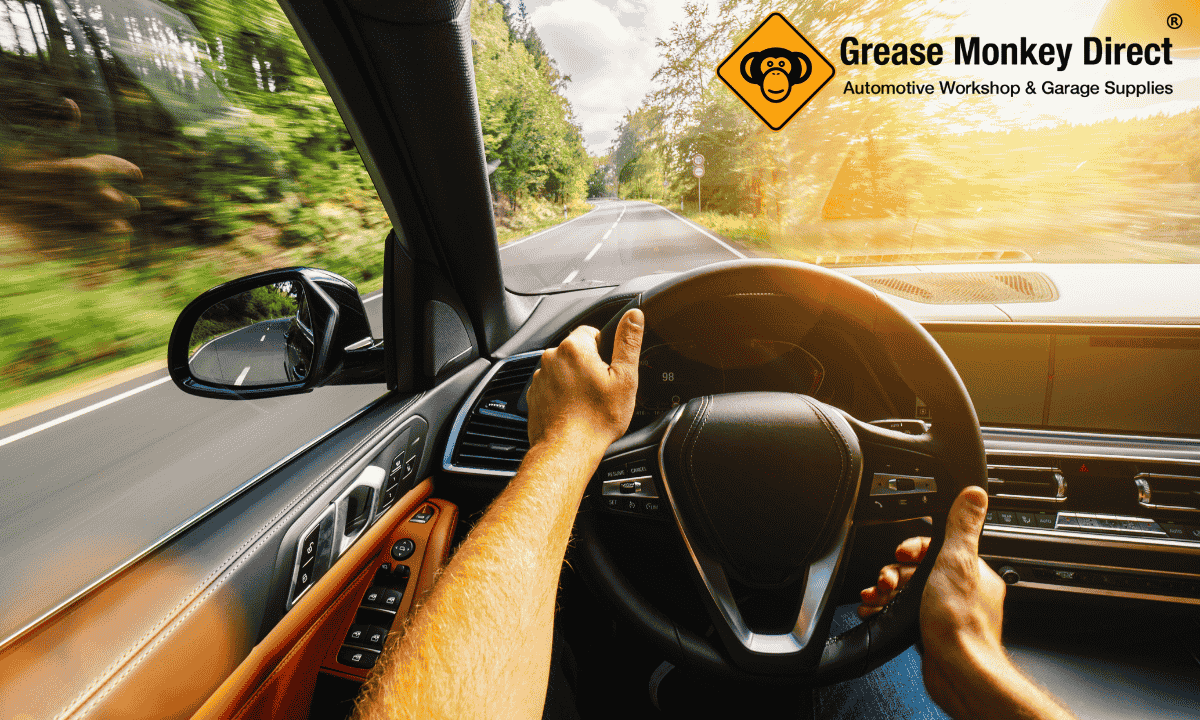6 Simple Tricks To Save Fuel When You're Driving
Making some subtle changes to your driving technique could make a big difference to your wallet. When it comes to fuel efficiency the way you drive is critical to getting the most out of your fuel tank. By following a [6] simple tips you can begin saving fuel and help the environment at the same time. Burning less fuel saves you money and lowers emissions.
Six Steps For Driving More Efficiently

1: Read The Road Ahead - Less Braking
Every time you press on the brakes you are cancelling out work the engine has already done. When it comes to conserving fuel the brakes are the enemy. While you should always use your brakes when you need to, (such as in an emergency, or a traffic stop), you should begin to consider easing off them while on the open road. The trick here is to read the road in front of you. By observing changes in the traffic ahead of you, you can adjust your speed by easing off the accelerator or changing gears instead of stamping on the brake pedal. To achieve this you must allow a considerable distance between you and the vehicle travelling in front.
2: Move Up Through The Gears Early
Move up through the gears early and keep your engine revs low. High engine revs mean you're burning more fuel as the engine is working overtime to keep up. A rough guide to aim for would be to change up a gear at 2,000 rpm in a diesel and 2,500 rpm in a petrol. Bear in mind every car is different but remember to climb up to top gear as early as possible and avoid the sound of the engine growling back at you.
3: Cruise Control - Constant Speed
Where the road conditions are suitable, cruise control offers an excellent way to stay at a steady speed and keep your momentum constant. This is a good way to save on fuel. However, while cruise control is a good option on an open flat road it is a bad choice on hilly terrain as the engine needs to adjust its rpm as you climb then descend a hill. The trick here would to be flick it on on an open flat road, and switch it off when you encounter rolling hilly terrain.
4: Air Conditioning Can Guzzle Fuel
If you're trying to save on your fuel bill you need to take a look at how you are using your air conditioning system. When travelling at a low to medium speed the air con eats up fuel. Reports have shown that using air con while travelling at speeds of up to 55mph creates a 8-10% increase in fuel consumption. However at speeds above 55mph it has been shown that it if you need some cool air in the cabin it is better to switch on the a/c instead of opening a window. The extra drag caused by an open window at this speed hampers the aerodynamics of the car. This increased drag results in more fuel consumption. Armed with this knowledge you will know when and how to use your A/C to save on fuel.
5: Smooth Steady Driving
Smooth and steady does it when it comes to saving fuel. Don't drive like a boy racer - drive like a zen eco warrior, calm in the knowledge you are saving money and saving the planet. Like we mentioned earlier you want to try and avoid using the brakes unnecessarily. But also you want to avoid accelerating hard too. While it might give a rush of adrenaline to floor the pedal and pull away in a cloud of burned rubber you're not doing your fuel tank, (or your tyres), any favours! Accelerate slowly and move up through the gears to avoid the high rpms. This is where the engine is really under pressure and guzzling fuel like there's no tomorrow.
6: Optimal Tyre Pressure
Make sure your tyres are at the recommended optimal pressure. Some people like to underinflate their tyres as it can create a greater contact area with the road and better 'grip'. However under inflated tyres create a greater rolling resistance and the engine has to work harder to keep them moving. This is bad news for fuel consumption. Lower tyre pressure is going to result in you burning more fuel. On a typical family car a drop of 6 psi in tyre pressure will result in a 20% increase in fuel consumption.
Then what about over inflation?
This is not a good idea...
Counter Argument - Overinflation:
An over inflated tyre is not operating the way it was designed to. It is not creating the necessary contact area with the road and this results in a significant and sometimes dangerous drop in road handling. The increased pressure will lead to an overly rounded tyre, the tyre tread will wear rapidly in the tyre centre, handling will be compromised and the overall feel will be a harder ride thanks to the rigidity of caused by the hard tyres. If you want to save on fuel - make sure your tyres are inflated to the correct pressure.
Drive Safe -
You can follow these six tips for driving more efficiently and you will see your weekly fuel bill tumble. And you'll be helping the environment too. And remember, always drive safely!
- Andy Wright @ Grease Monkey Direct


3 comments
Sharon P.
How about moving with the times and getting an electric or even just a hybrid. Then you can save on fuel and save the planet at the same time.
Keith
Don’t let the dog stick its head out the window. Very bad for aerodynamics
BaxMan
And clear out the boot. Not so much a driving tip but worth doing while youre at it.